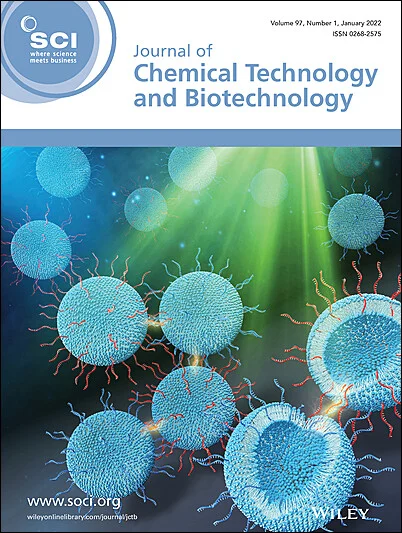Aeration-enhanced leaching mechanism and kinetics for column bioleaching of copper sulfide ores
Abstract
BACKGROUND
Artificial aeration plays a pivotal role in the bioleaching of sulfide ores by influencing microbial activity, oxygen supply, and mineral dissolution kinetics. However, the quantitative relationship between aeration rate and leaching efficiency for low-grade copper sulfide ores, particularly under column leaching conditions, remains insufficiently characterized.
RESULTS
Through systematic column leaching experiments conducted at 30–45 °C with aeration rates ranging from 0 to 150 L h−1, we observed that the Cu recovery rate throughout bioleaching was not entirely positively correlated with the aeration rate. Column leaching performance at 95 L h−1 aeration rate is comparable to that at 110–150 L h−1 in the initial leaching phase. By the end of leaching, Cu recovery rate reaches 80.1% at 150 L h−1 aeration rate, which is an increase of 11.4% from the 68.7% achieved without forced aeration. Analysis of the leaching mechanism indicates that artificial aeration (>95 L h−1) enhances the positive cycle among factors such as leaching microorganisms, Fe2+ and Fe3+, while also improving the temperature and pore structure of the leaching system.
CONCLUSION
These findings provide both fundamental insights and practical tools for industrial applications. The identified aeration threshold of 95 L h−1 offers a cost-effective operational target, while the validated oxygen demand model serves as a predictive framework for scaling up bioleaching processes. This work advances the scientific understanding of aeration effects in bioleaching systems and enables more efficient design of industrial heap leaching operations through optimized oxygen management strategies. © 2025 Society of Chemical Industry (SCI).



 求助内容:
求助内容: 应助结果提醒方式:
应助结果提醒方式:


